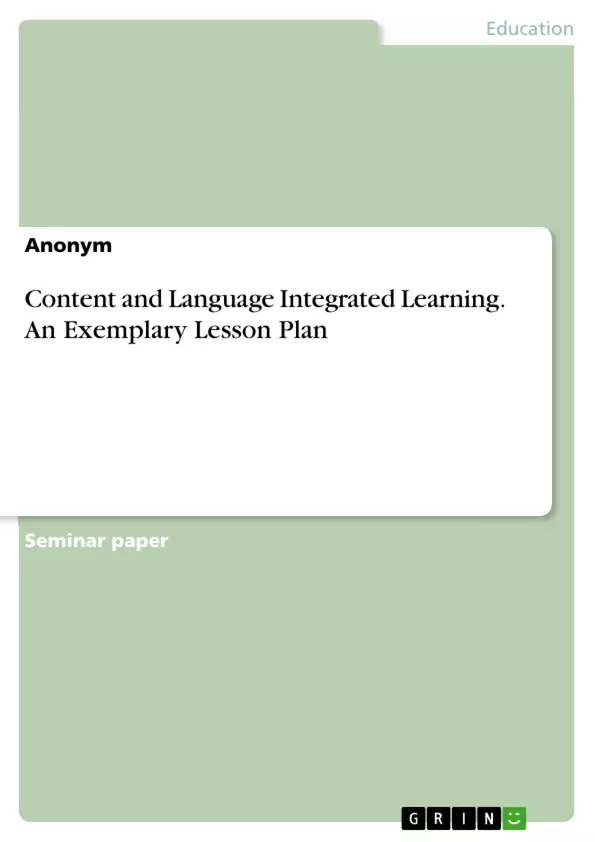This paper is dedicated to the concept of CLIL (Content and Language Integrated Learning). In order to get a good impression of what this means, the first chapter will introduce the concepts and theory of CLIL and explain why it should be used.
In the following chapters I will present a lesson I have developed about the structure of North American cities. In this lesson, the learners will draw their own map of Rochester, NY, guided by a step-by-step instruction and finally, I will reflect the lesson and evaluate it. It becomes indisputably more important to be able to speak more than one language, as the world is constantly growing together. This raises the question, what ways there are to obtain the skill to speak another language apart from the native language. The appendix includes the complete material for the lesson - including worksheets and everything else that was used - as well as the lesson plan.
Table of Contents
- Introduction
- What is CLIL?
- The term CLIL
- The difference between foreign and second language
- The history of CLIL
- Reasons for using CLIL
- The 4 Cs
- Teaching Unit
- Reflection
- Bibliography
- List of Literature
- Material for the Lesson
- Appendix
- Lesson Plan
- Other Material
Objectives and Key Themes
This paper introduces the concept of Content and Language Integrated Learning (CLIL), arguing for its effectiveness in language learning and the benefits it brings to learners. The paper discusses the origins and development of CLIL, exploring why it is a valuable approach compared to traditional foreign language teaching methods. It also presents a specific CLIL lesson about the structure of North American cities, aiming to demonstrate how the concepts of CLIL can be applied in practice.
- The theory and practice of CLIL
- The effectiveness of CLIL in language acquisition
- The benefits of CLIL in terms of learner motivation and engagement
- The role of intercultural competence in CLIL
- The application of CLIL in a specific lesson plan
Chapter Summaries
The introduction sets the context for the paper by highlighting the growing importance of multilingualism and the need for effective language learning approaches. It introduces CLIL as a potential solution and outlines the structure of the paper. Chapter 2 delves into the definition of CLIL, discussing different terms and their connotations. It explores the distinction between foreign and second languages, the historical development of CLIL, and the reasons why it is a valuable teaching approach. The chapter also introduces the 4 Cs framework as a central concept of CLIL. Chapter 3 focuses on the development of a specific CLIL lesson plan, which is based on the concept of teaching about North American cities.
Keywords
Content and Language Integrated Learning (CLIL), Bilingual Teaching, Dual Language Program, foreign language, second language, intercultural competence, the 4 Cs, communicative competence, learner motivation, authentic learning environment, lesson plan, North American cities, geographical structures.
- Quote paper
- Anonym (Author), 2018, Content and Language Integrated Learning. An Exemplary Lesson Plan, Munich, GRIN Verlag, https://www.hausarbeiten.de/document/1464356


